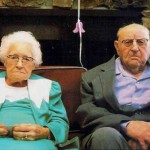The GOP Goes Gray
 Republicans were forced to rely heavily on rural, older voters for their victory, raising questions about how sustainable their majority is in the long term.
Republicans were forced to rely heavily on rural, older voters for their victory, raising questions about how sustainable their majority is in the long term.
Who voted yesterday? The electorate on Tuesday was older and whiter than the presidential election cycle electorate in 2008, which poses challenges for Republicans, who have not significantly broadened their vote and are relying on rural, older voters for their majority. Indeed, exit poll data shows that the GOP is still struggling to appeal to young voters, as well as black and Hispanic voters.
Exit polls show that white voters represented the vast majority of the electorate this cycle, casting 78% of the votes, 60% of which went to the Republican Party. However, among other voters, the Republican Party did poorly: 90% African-Americans voted for Democrats, as did 64% of Latinos and 56% of Asians.
Young voters showed up in far fewer numbers this year than when Barack Obama was up for election in 2008. Voters between 18 and 29 years old represented only 9% of the electorate this year, compared to 18% in the 2008 election. The 18-29 demographic was the only age group measured by CNN’s exit polling to be won by Democrats: 57% of this group voted Democrat, as opposed to only 40% for Republicans.
Republicans struggled with lower-income voters but managed to dominate the middle and upper classes. Exit polls show that voters making less than $50k voted for Democrats by an 11 point margin, but those making between $50k and $100k voted for Republicans by a 10 point margin. $100k+ earners voted for Republicans by nearly 20 points.
Andrew Rugg, a research assistant at the American Enterprise Institute, told FrumForum that among gay, lesbian and bisexual voters, which represented about 3% of the electorate, 68% broke for Democrats and 31% for Republicans. For Republicans, this represented a 12 point jump from 2008, when they got 19% of the vote in this category.
“Gay and lesbian voters are just like other voters in the electorate – many of them are astonished about the growth in government, and the misguided priorities of this administration,” said Jimmy LaSalvia, the executive director of GOProud, a group that represents gay conservatives. “These numbers don’t surprise me at all.”
Rugg also pointed out that rural voters broke for the Republican Party in astonishing numbers. In 2006 and 2008, says Rugg, Democrats and Republicans both received about half of rural votes. In this election cycle, 60% of rural voters voted Republican, compared to 30% for Democrats.
Karlyn Bowman, a senior fellow at the American Enterprise Institute and an expert in public opinion, said today that there seems to be a striking ideological shift amongst the electorate this cycle. “One of the most striking changes I’ve seen is the increase in the proportion of self-described conservatives. Forty-one percent of voters in House contests described themselves as conservative, up from 32 percent in 2006,” despite partisan identifications remaining the same, she wrote.
These exit polls and demographics pose some challenges to Republicans: how will they fare with an electorate that includes more black voters and more young voters than in this cycle? Will self-identified conservatives stay that way through 2012?
These numbers show that Republicans haven’t done enough to broaden the vote. And without young voters and minorities, how sustainable can their majority be in the long term?
Tweet
Add Tim on twitter: www.twitter.com/timkmak